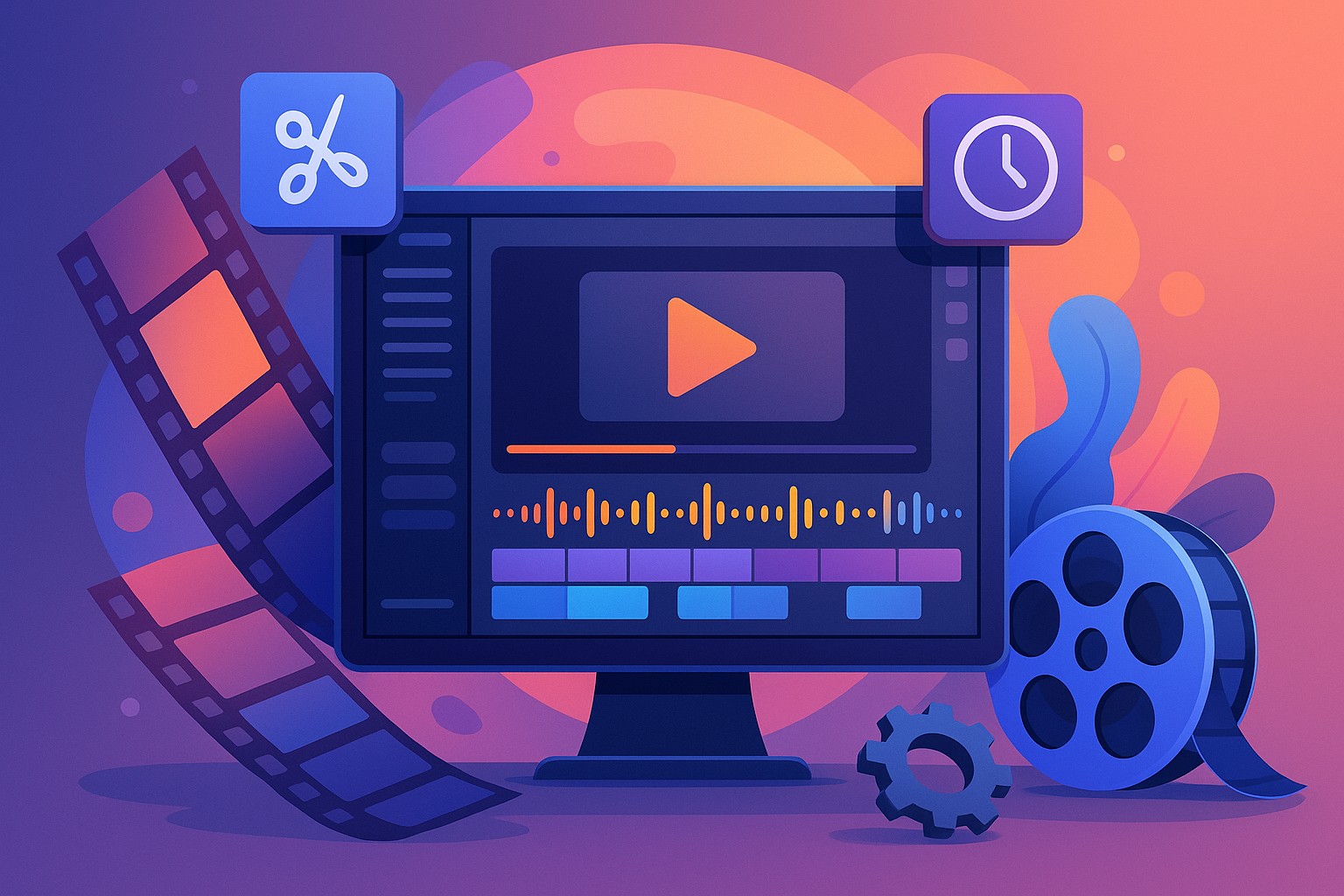Video Editing Basics & Workflow
Turn raw footage into a polished story by following a structured editing process.

What Is Video Editing?
Video editing is the overall process editors use to transform raw footage and audio into a finished, polished video. It happens after the footage is captured and before the final export or distribution of the completed work.
Why Follow a Workflow?
An efficient editing workflow helps speed up the process, keeps you on track and ensures you don’t miss essential steps. By following a step‑by‑step method you can guide your project from start to finish, deliver a high‑quality edit on time, maintain consistent quality and continuity, facilitate collaboration with others and allow for easier revisions.
A 10‑Step Editing Workflow
- Pre‑visualize / Storyboard: define the narrative and plan what shots you need. Sketch a rough storyboard or outline to clarify your vision.
- Organize your material: sort your footage into folders by scene, camera, take or audio type. This makes it easy to navigate through hours of footage.
- Plan your edit: establish the core message, narrative structure, visual style, pacing, sound design, target audience, publishing platform and deadlines.
- Create a rough cut: assemble clips in order, trimming only for structure and pacing. Focus on storytelling rather than fine details.
- Refine the edit: make a fine cut by selecting the best takes, adjusting timing, adding B‑roll and refining transitions.
- Picture lock: once you’re happy with the visual sequence, lock the cut and get feedback before final finishing touches.
- Add visual effects (VFX): incorporate effects such as chroma key, animations, motion graphics or crowd duplication to enhance the visuals.
- Color correction & grading: fix exposure or color mismatches, then apply creative color grading to set the mood and tone.
- Sound editing & mixing: balance dialogue, sound effects and music; clean up noise; and ensure the audio supports your story.
- Titles & graphics: add opening titles, lower thirds and other graphics in sync with the pacing to contextualize your video.
Best Practices
- Keep off‑cuts: save unused clips—you might need them later for fillers or alternate takes.
- Save versions & back up: regularly save different versions and back up your project to avoid data loss.
- Edit in batches: break your project into smaller sections to manage complexity and maintain consistent style.
- Seek feedback: share your cut with others to get fresh perspectives and suggestions for improvement.
- Set time limits: work in focused sessions to avoid endless tweaking and maintain efficiency.
Rough Cut vs. Fine Cut
The rough cut is your first assembly of the story. At this stage you arrange and trim clips to build the basic sequence and pacing. It provides an early glimpse of your video and opens up opportunities for feedback; details like transitions or sound design are less important. Once the structure feels right, you create the fine cut. This stage is about precision: you select the best shots, refine timing and rhythm, incorporate B‑roll and apply advanced editing techniques such as match cuts, J‑cuts and L‑cuts.
Understanding Color Correction & Grading
After locking the picture, you correct and grade the colour. Colour correction ensures that shots with different exposure or colour casts match each other: for example, you adjust a clip that is too blue or dark so it fits with the surrounding footage. Colour grading comes next; here you creatively apply colour to set the mood and tone. Warm, golden tones convey a cheerful atmosphere, while cool blues or greys create a gloomy feel.
Sound Editing & Mixing
Sound editing and mixing involve more than making audio louder or softer. You balance dialogue, music and effects to support your story; clean up unwanted noise; add ambience and choose appropriate music. Professional tools let you trim clips, change speed or pitch, apply filters and visualize waveforms to ensure that nothing overpowers the rest.
Titles & Graphics
Titles and graphics usually come toward the end of the workflow so they sync perfectly with the pacing. Opening titles, lower thirds and visual aids provide context and highlight key information. Modern editors offer presets, custom animations and flexible controls for adjusting size, alignment and placement of text and graphics.
By following this structured approach, paying attention to details like color and sound, and incorporating best practices, you can transform raw footage into engaging stories more efficiently—and create videos that resonate with your audience.

